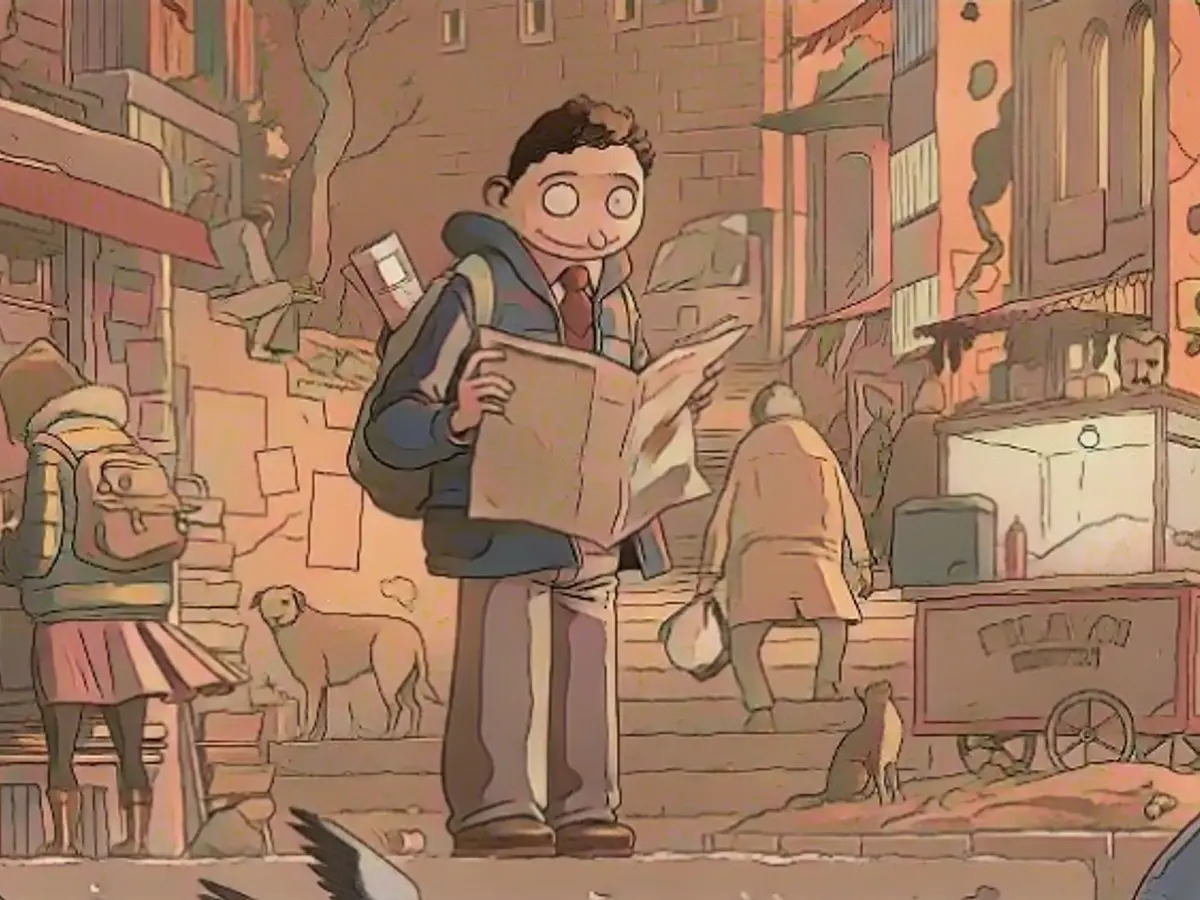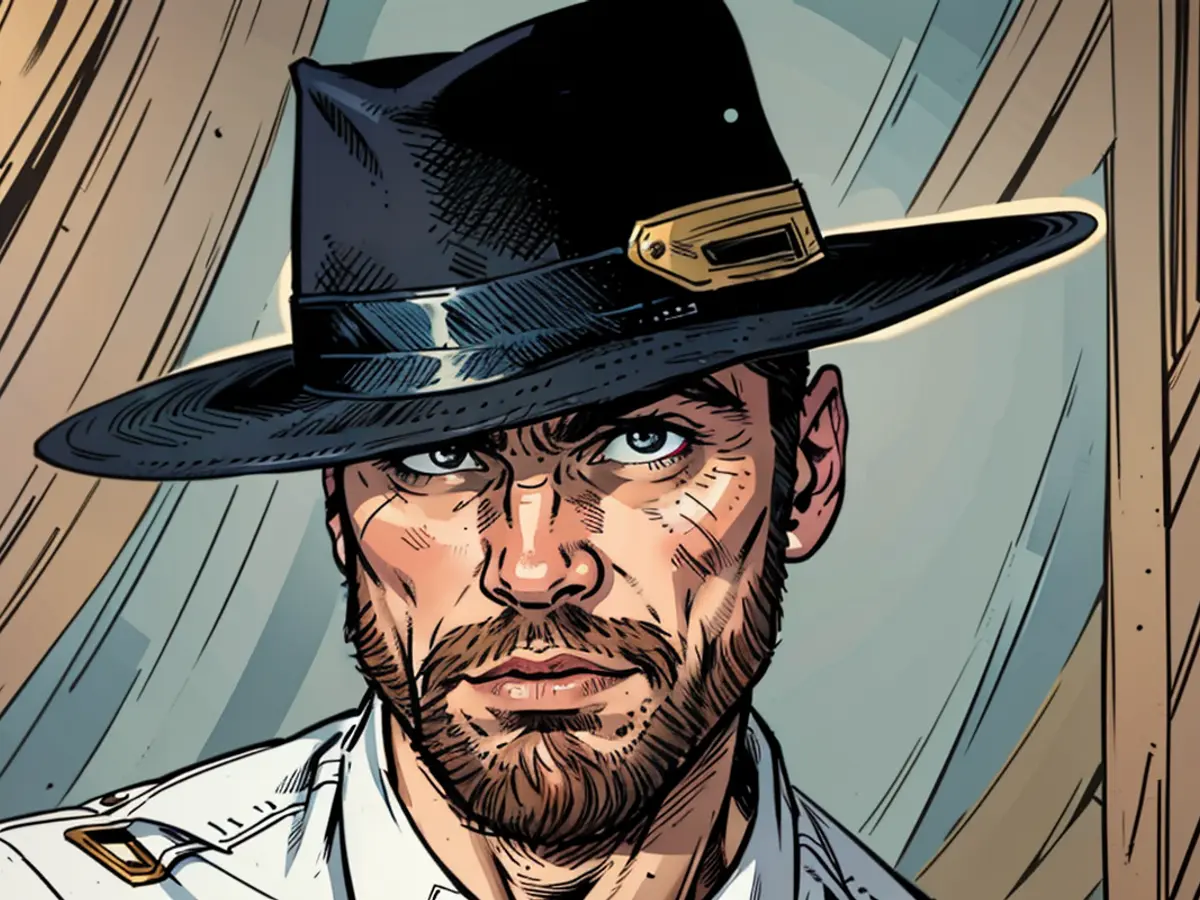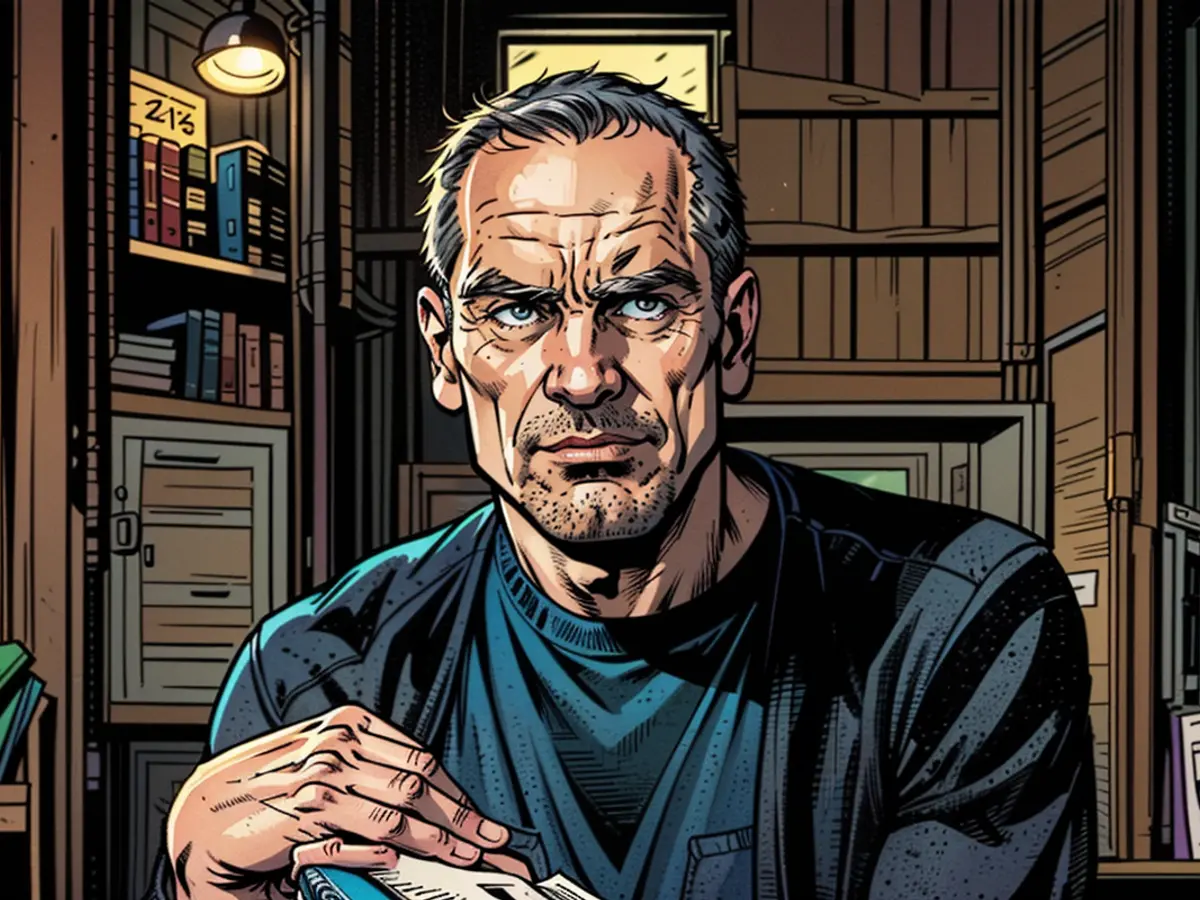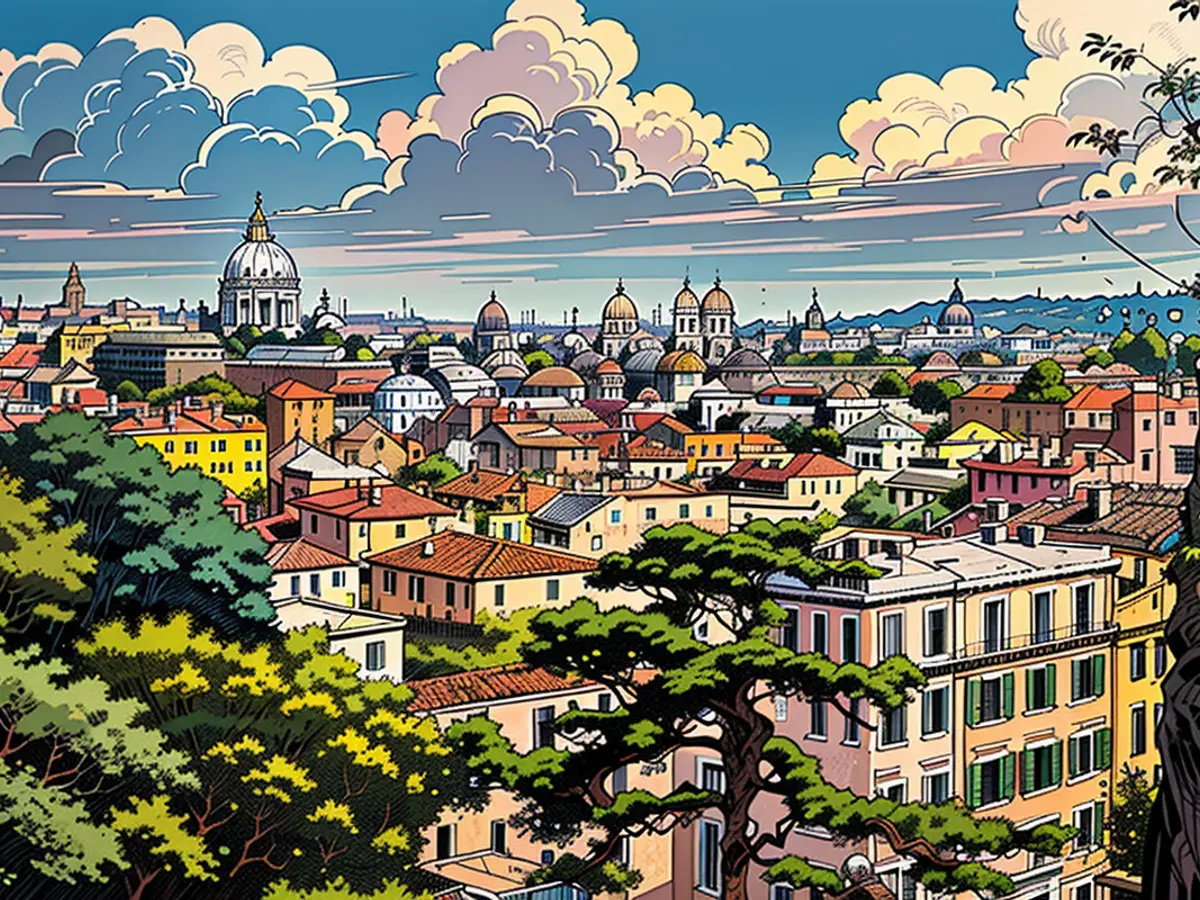"You can't beat the whole world"
A Turkish comic artist has to defend himself against reprisals. A French colleague wants to take on all anti-Semites and right-wing extremists. A man visits a site of the greatest atrocities. And a young woman experiences the great freedom after the fall of the Berlin Wall. Four comics that have one thing in common: Protagonists trying to survive in a violent world.
What is satire allowed to do?
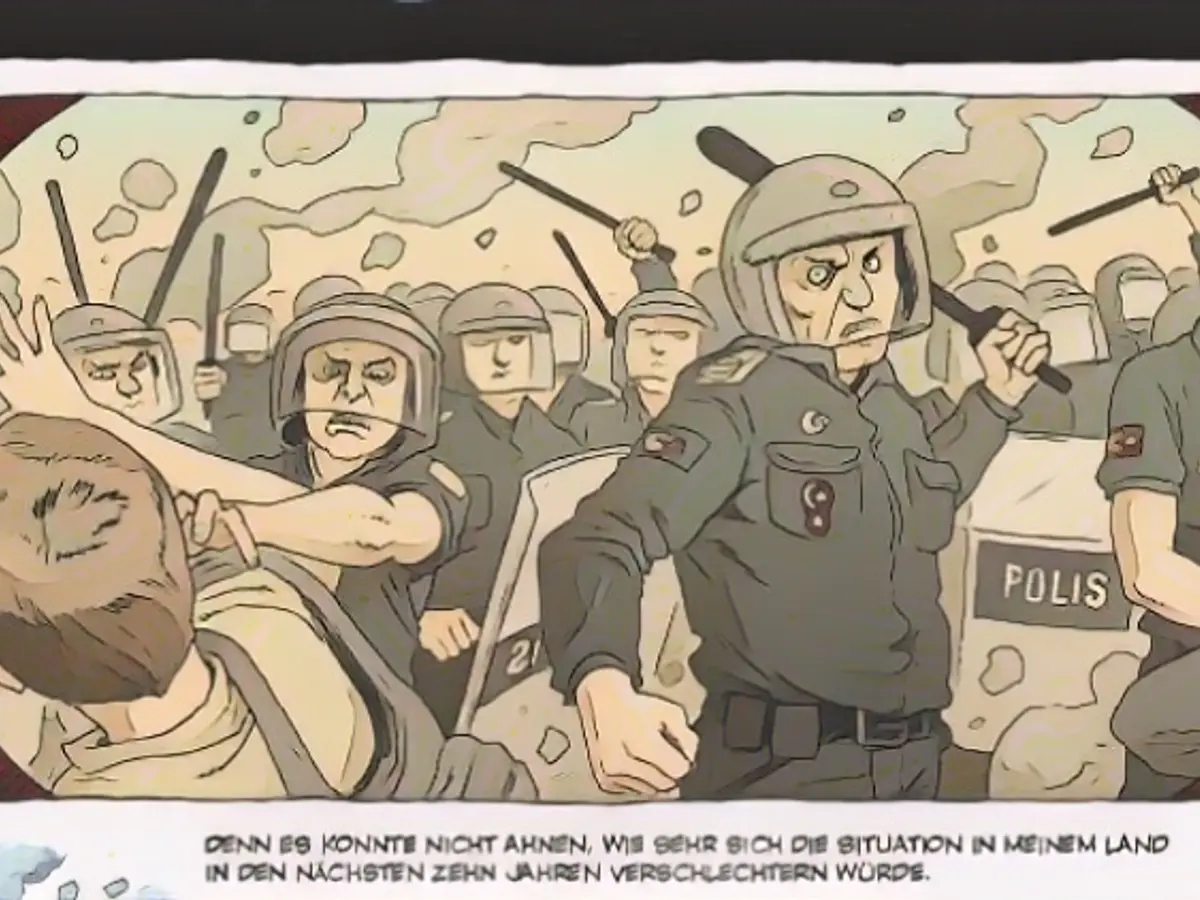
Turkey has a long and successful tradition of satire. Magazines such as "LeMan", "Penguen" and "Uykusuz" were and are very popular in the country. Ersin Karabulut, one of the best-known cartoonists of the younger generation, also works for the latter. In "The Diary of Restlessness"(sample), a three-volume series, he gives an insight into his life, his love of comics and the start of his career. He also describes the political developments in Turkey and the increasing pressure that magazines are under.
The volume captivates with its humor, exaggerated characters and slapstick scenes in which Karabulut takes the piss out of himself. At the same time, the illustrator is a precise observer of social developments, which he sometimes subtly, sometimes very openly addresses: the chaotic, violent 1970s - before Karabulut was born in 1981 -, the military coups, the growing power of religious zealots and right-wing extremist thugs and finally the rise of the AKP and Recep Tayyip Erdogan.
Karabulut succeeds in juxtaposing funny and serious tones, private life and politics, because, as a satirist, the two are constantly intertwined. He proves to be not only a gifted draughtsman with a perfect command of facial expressions and gestures, but also a great humorist. The volume ends with him moving out of his parents' house to protect them from the increasing threats from religious forces. And with a glimpse of what is to come in the following volumes: Erdogan's path to power and the constant restructuring of the state, which also includes increasing pressure on the freedom of the press.
Your violence is just a silent cry for love
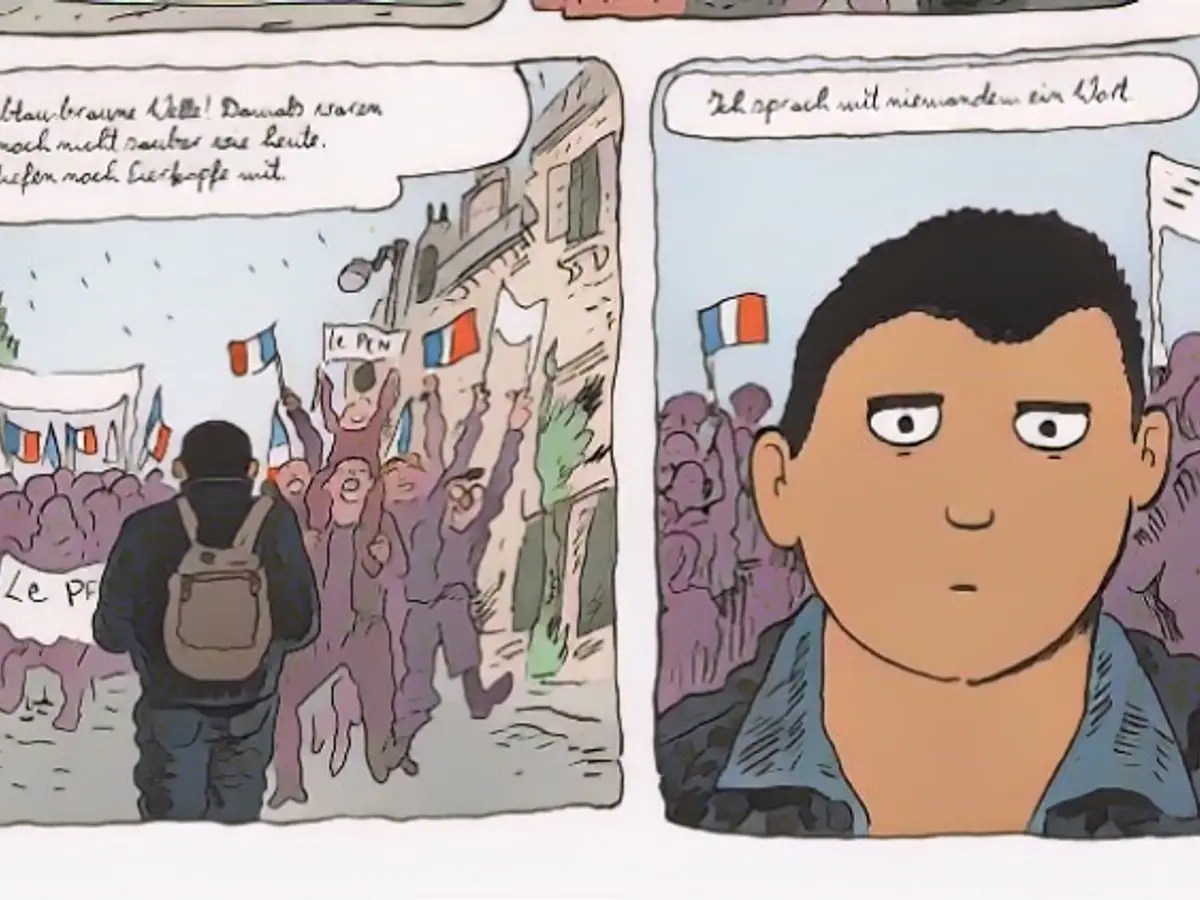
Joann Sfar is one of the best-known French artists. The prolific writer has produced a number of comics as well as novels and films. But rarely has Sfar been as personal as in his new work "The Synagogue"(sample). Like Karabulut, he embeds autobiographical experiences in social developments. In this case, it is the increasing anti-Semitism in France in the 1980s, which led, among other things, to community vigilance groups having to protect the synagogues. Sfar, a descendant of both Ashkenazi and Sephardic Jews, is one of them - because it means he doesn't have to attend the boring services in his community in Nice.
Right at the beginning, Sfar realizes that nothing happens during these services. But based on this situation, Sfar remembers his childhood, his father - a single, successful lawyer who takes legal action against neo-Nazis - and his own experiences with anti-Semites and right-wing extremists. Ultimately, it is about the question of how Jews can live safely. And what being Jewish means to Sfar, who is not religious. Can you take revenge on the Nazis and anti-Semites, can you beat them all up - Sfar takes extra kung fu lessons as a young man. Even if it is mainly about the 80s and 90s in France, Sfar's book is of course highly topical in view of the renewed rise in anti-Semitism. And the fundamental question posed by his book remains unanswered. That is depressing.
But that doesn't mean that Sfar's book isn't just as amusing, albeit much more subtle and ironic than Karabulut's. Above all, Sfar takes apart his own youthful overconfidence. His encounters with neo-Nazis never end as heroically as he had imagined. In general, "The Synagogue" is a wild ride (too long in places), with leaps in time and overlapping memories and thoughts. And fantasies. That's why he has the partisan Abba Kovner appear at the end, of all people, who says: "You can't beat the whole world, but nothing prevents you from talking to it." With his comic series "The Rabbi's Cat" and "Klezmer" (both published by Avant), Sfar has long since found his language.
Through hell
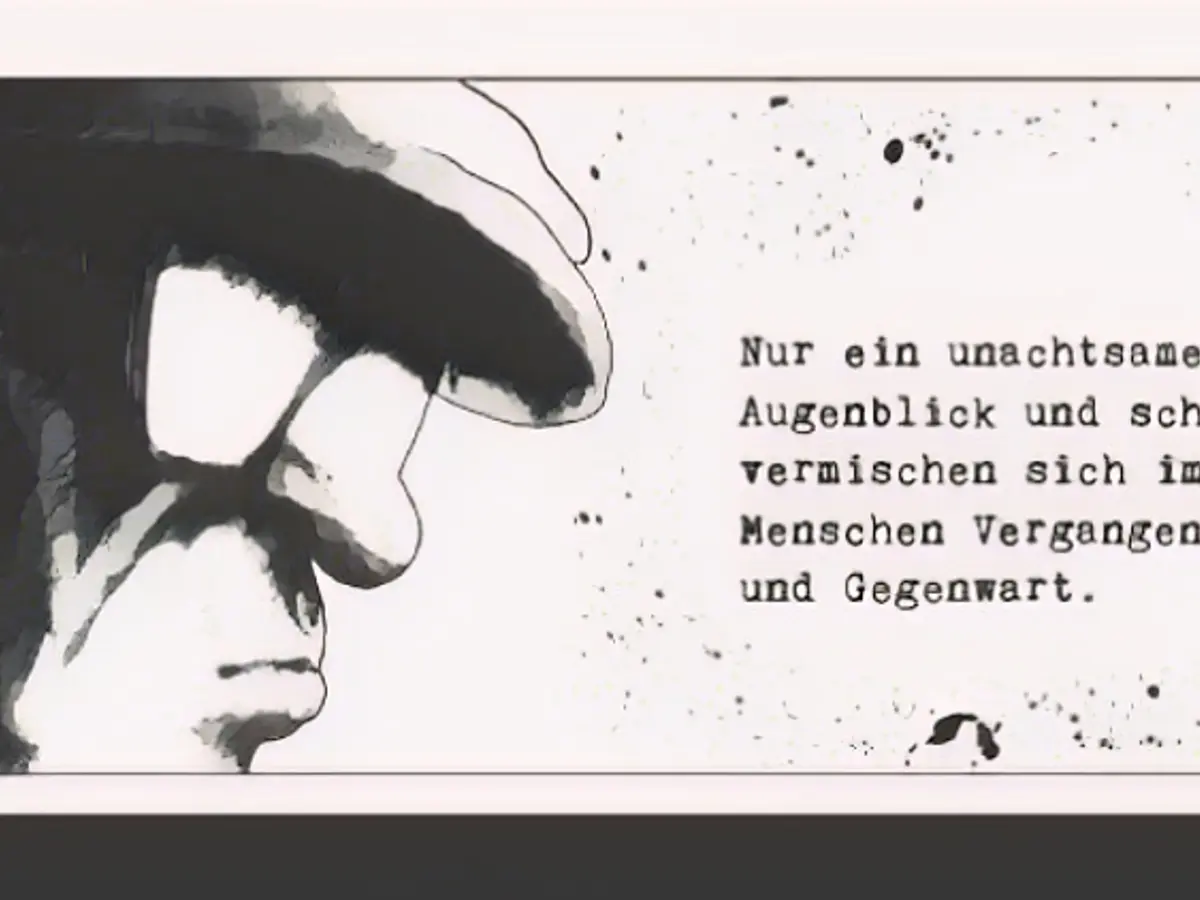
"Necropolis" - city of the dead. This is what Slovenian author Boris Pahor called his best-known book. Pahor, who survived the Dachau, Natzweiler-Struthof, Mittelbau-Dora and Bergen-Belsen concentration camps as a partisan fighter, has a concentration camp survivor walk through the Natzweiler-Struthof camp decades after its liberation, recalling the horrors he experienced there. Jurij Devetak has adapted the book as a comic(sample). Pahor himself accompanied the project before he died last year at the age of 108.
The presentation in stark black and white is adapted to the subject. The panel structure is repeatedly broken up with single or double-page illustrations. And the faces of the people are unrecognizable, sometimes blurred. Too many were murdered here, nameless, robbed of their dignity. Even the protagonist's face is not completely visible, obscured by a slouch hat and glasses.
The text, an inner monologue by this man, is taken from the original and describes the atrocities, memories of campmates or the brutality of the guards. And at times it is almost unbearable. Together with the drawings, the result is an incredibly condensed, almost documentary-like view of life in a concentration camp on just under 160 pages. Nothing here offers redemption, nothing distracts from the horrors of German tyranny. A punch in the gut, against forgetting.
The West in color
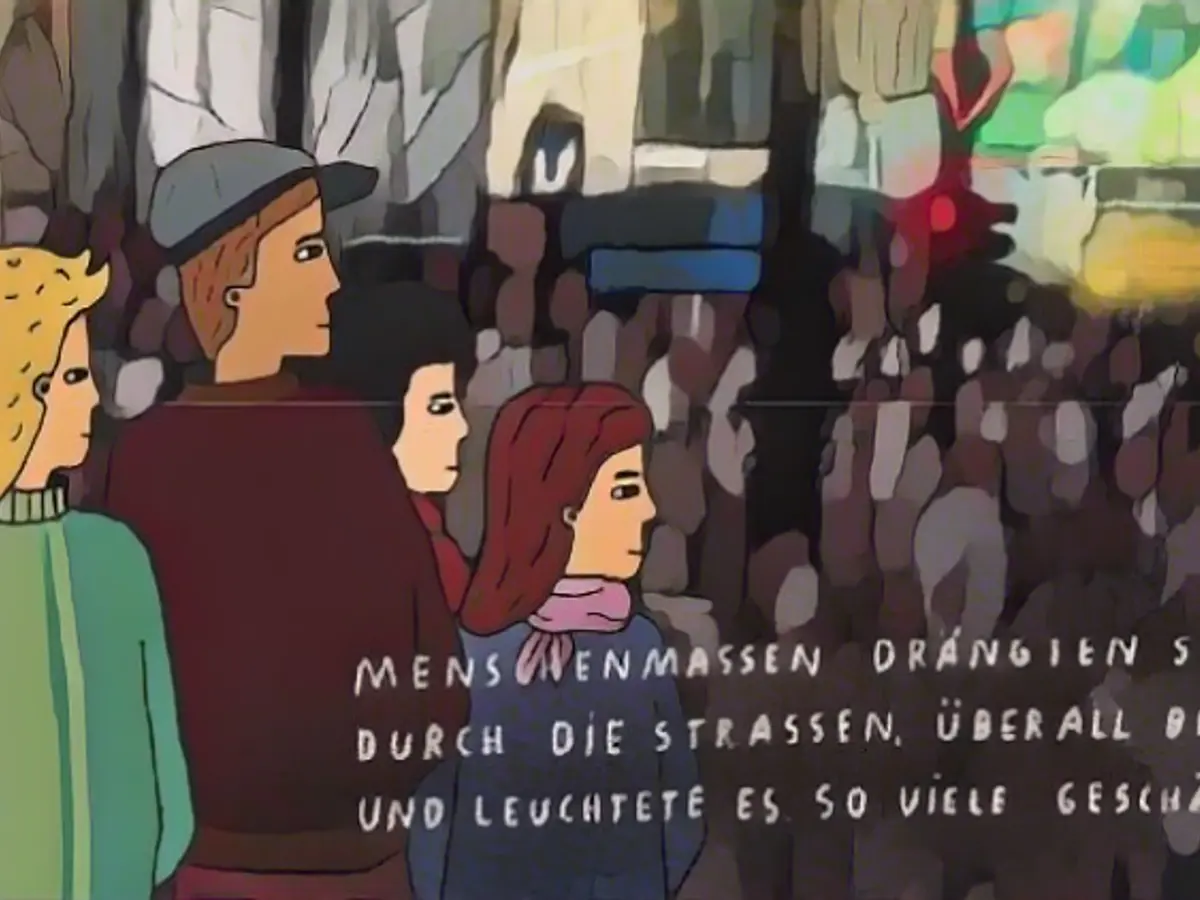
The world Sandra Rummler describes in "Seid Befreit" is not black and white, but gray and dreary. It is the East Berlin of the 80s in which young Mo lives. Dilapidated houses and a call to arms - that sums it up. But there are also pleasures for Mo, such as afternoons with her grandmother or discoveries in the backyards. Mo begins to break out of the path set by the system. Until the wall falls - and the great freedom beckons.
Jana Hensel has called her novel "Zonenkinder" (Zone Children) about the generation that experienced their childhood in the GDR but their youth in reunified Germany. Mo is one such Zonenkind and she enjoys her new-found freedom to the full, for example as an S-Bahn surfer, despite prejudices against East Germans and neo-Nazis - these are also the baseball bat years.
The comic derives its tension from the contrast between the backgrounds, which are initially gloomy and in dark tones, and the figures, which are colorful and uniform, almost stencil-like, in the foreground. Only after the fall of the Berlin Wall does a little more color enter the world - as an expression of the opportunities that have been gained. At the same time, however, they also lend the comic more unrest, more uncertainty, as many former GDR citizens had to experience in the 1990s. Mo, however, leaves her childhood behind, even if she sometimes mourns the loss of her childhood home.
Read also:
- The woman who dances with death
- We all have someone on our conscience
- Explosive names revealed? Book about royals stopped
- The legacy: Shakespeare's "Folio" turns 400
- Ersin Karabulut, a Turkish comic artist working for magazine "Uykusuz", uses his satire to critique the increasing pressure on magazines and political developments in Turkey.
- Joann Sfar, a French artist and descendant of Ashkenazi and Sephardic Jews, addresses the growing anti-Semitism in France in his comic "The Synagogue", which offers a subtle and ironic perspective on the topic.
- Slovenian author Boris Pahor's best-known work, "Necropolis", is adapted into a comic by Jurij Devetak, providing a stark and documentary-like view of life in a concentration camp during the German tyranny.
- "Seid Befreit" by Sandra Rummler describes the gray and dreary world of East Berlin in the 80s, focusing on a young character named Mo who experiences the great freedom after the fall of the Berlin Wall.
- A group of right-wing extremists in France seek to silence a comic book reviewer who is critical of National Socialism and antisemitism, illustrating the ongoing threat of extremism to freedom of the press.
Source: www.ntv.de
